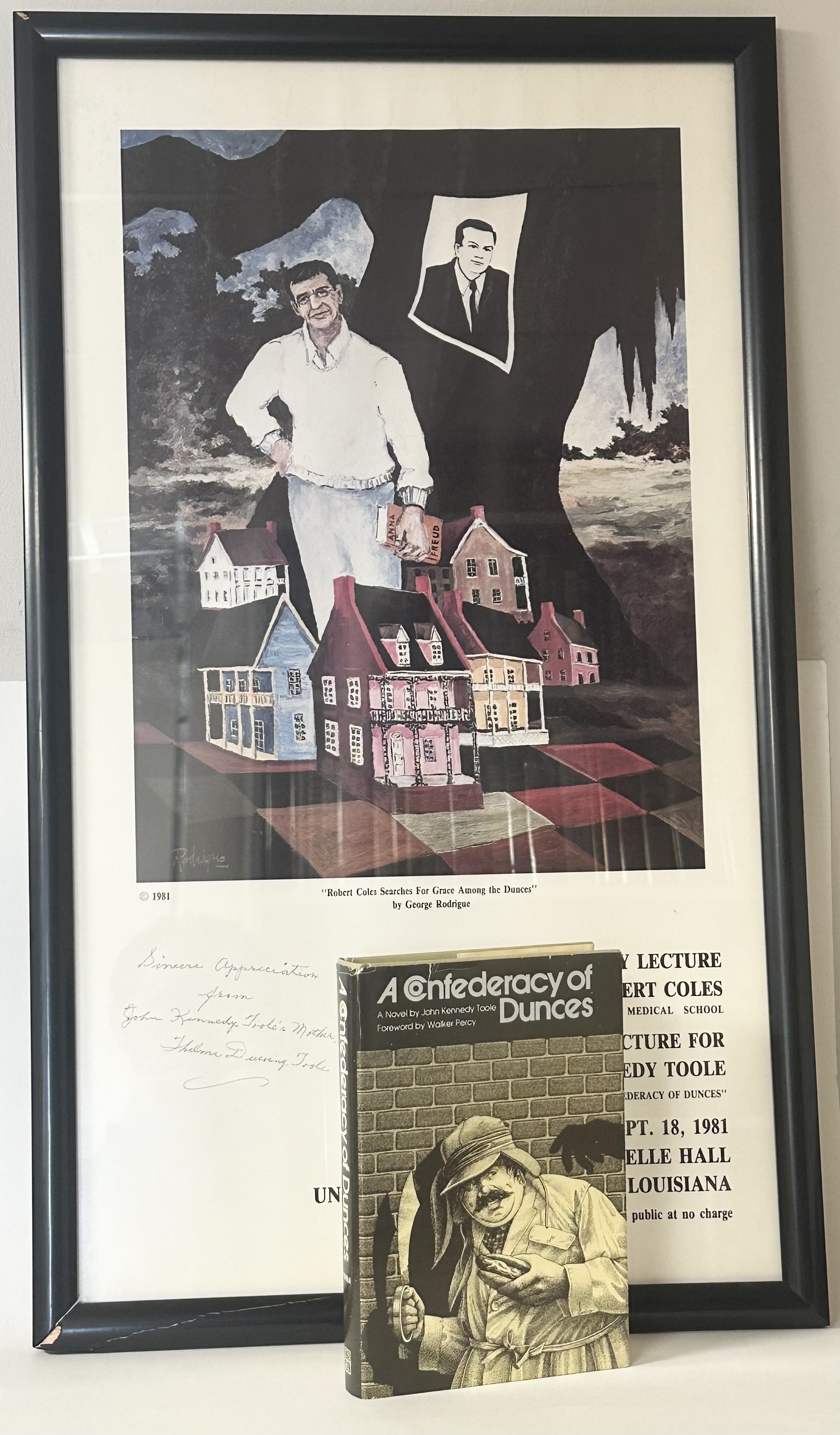 Image 1 of 13
Image 1 of 13

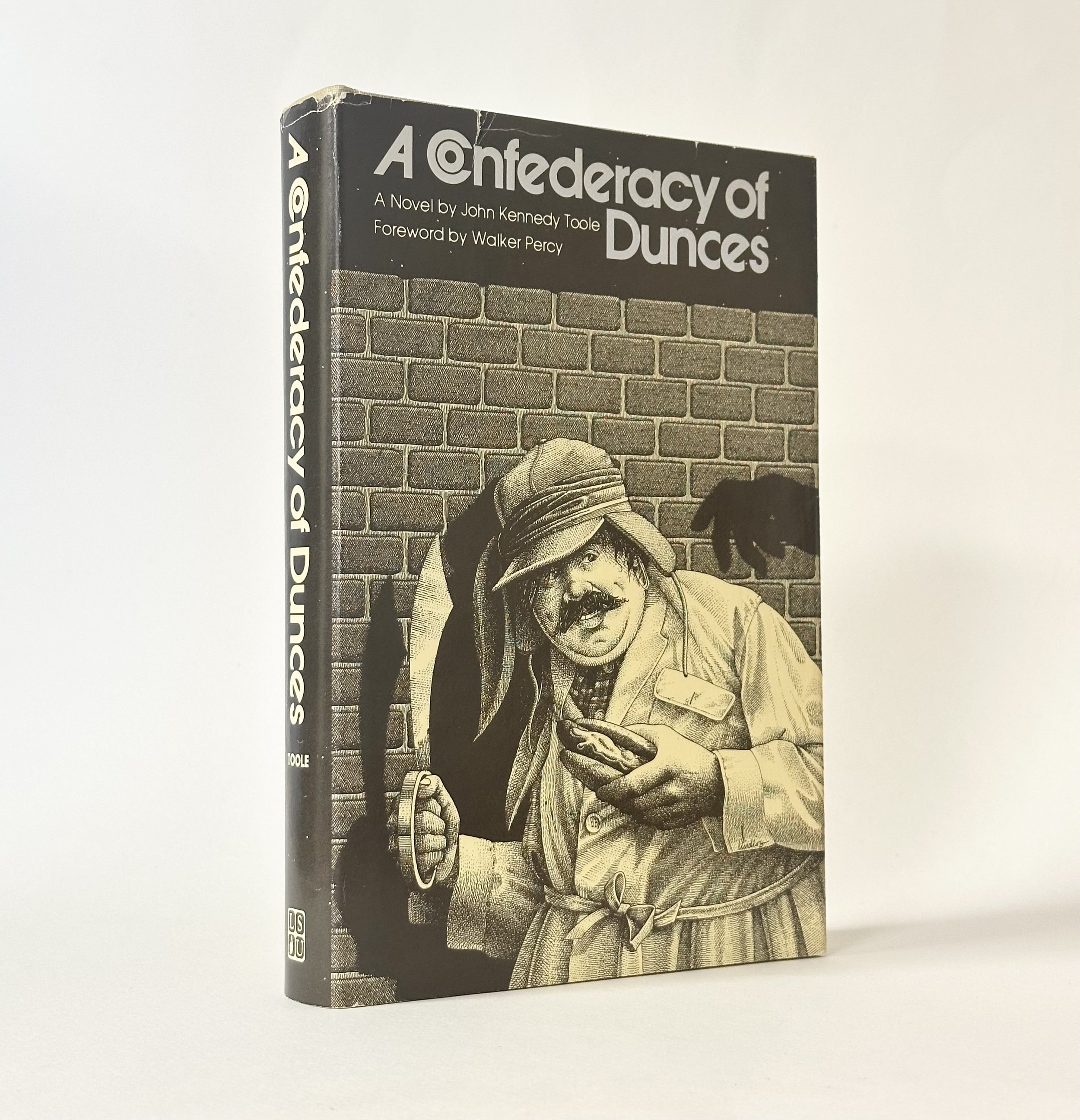 Image 2 of 13
Image 2 of 13

 Image 3 of 13
Image 3 of 13

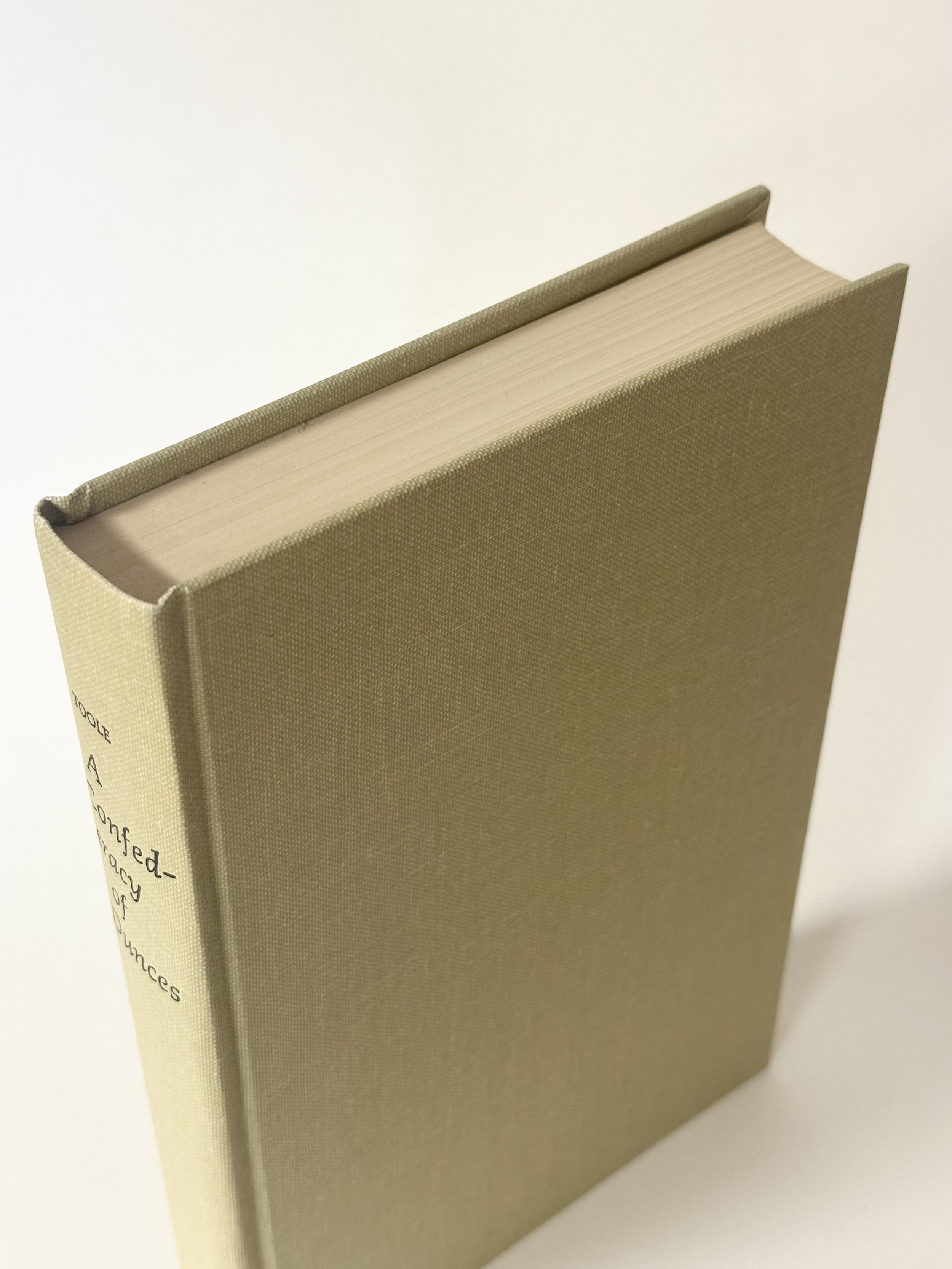 Image 4 of 13
Image 4 of 13

 Image 5 of 13
Image 5 of 13

 Image 6 of 13
Image 6 of 13

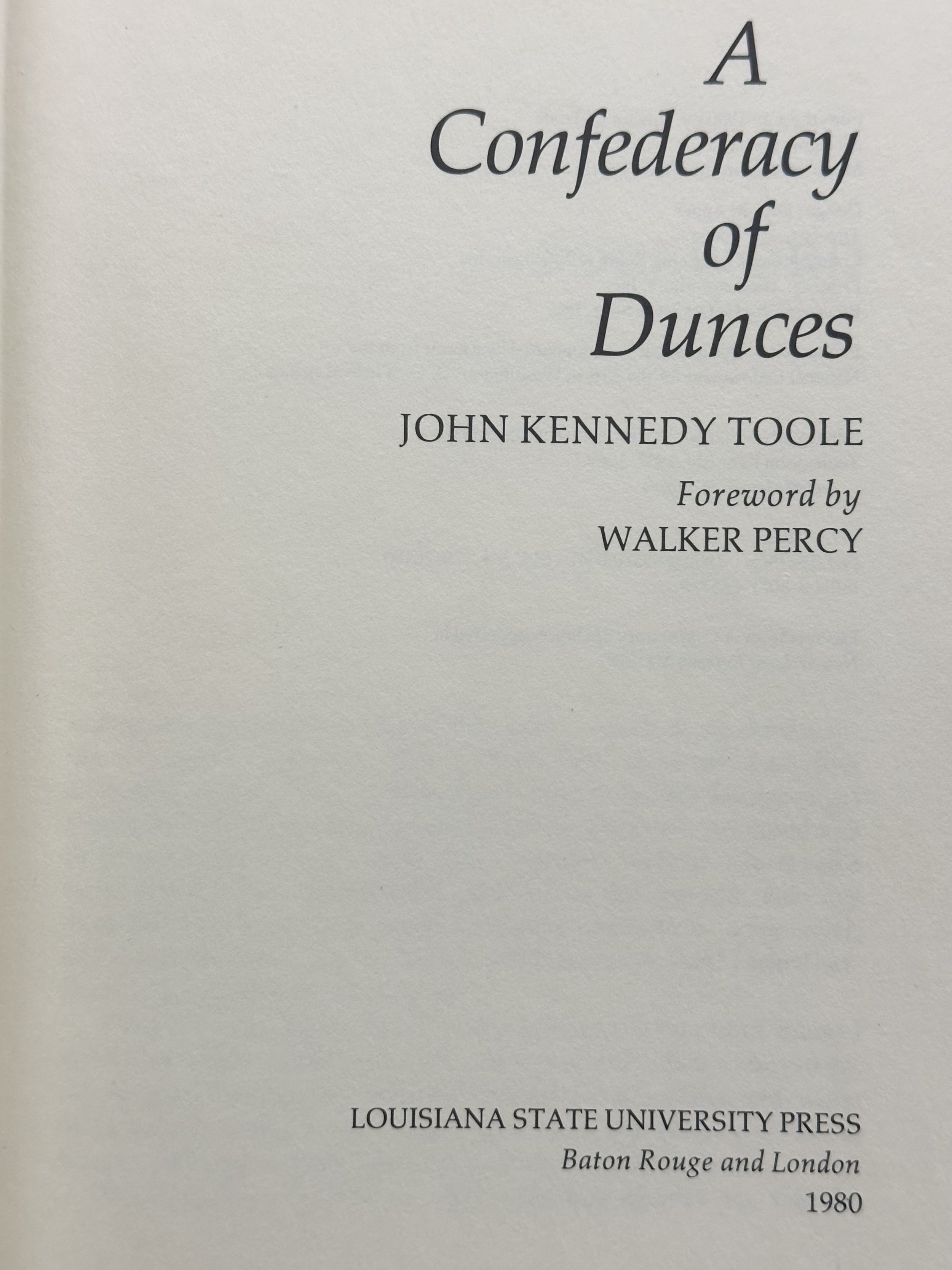 Image 7 of 13
Image 7 of 13

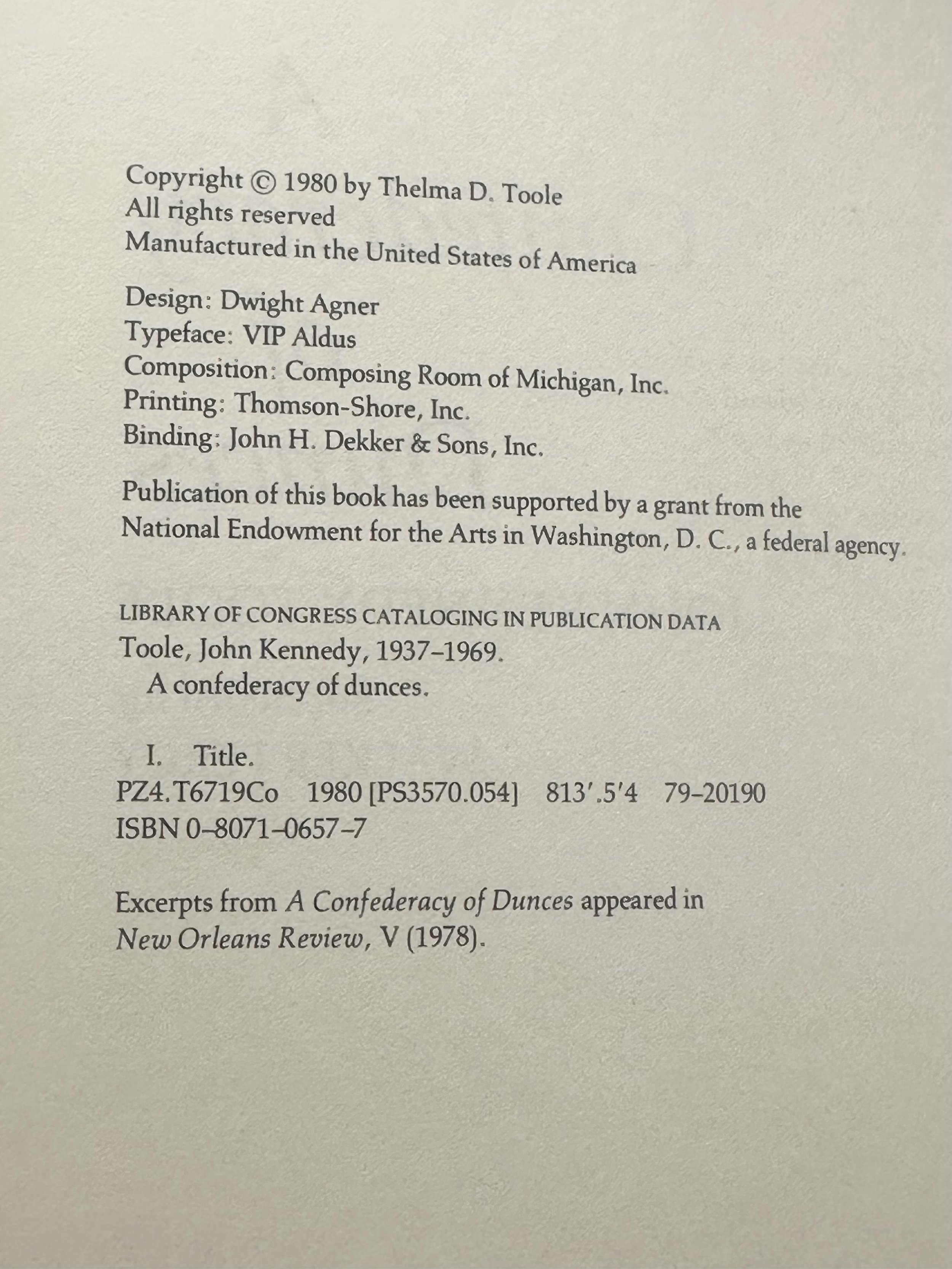 Image 8 of 13
Image 8 of 13

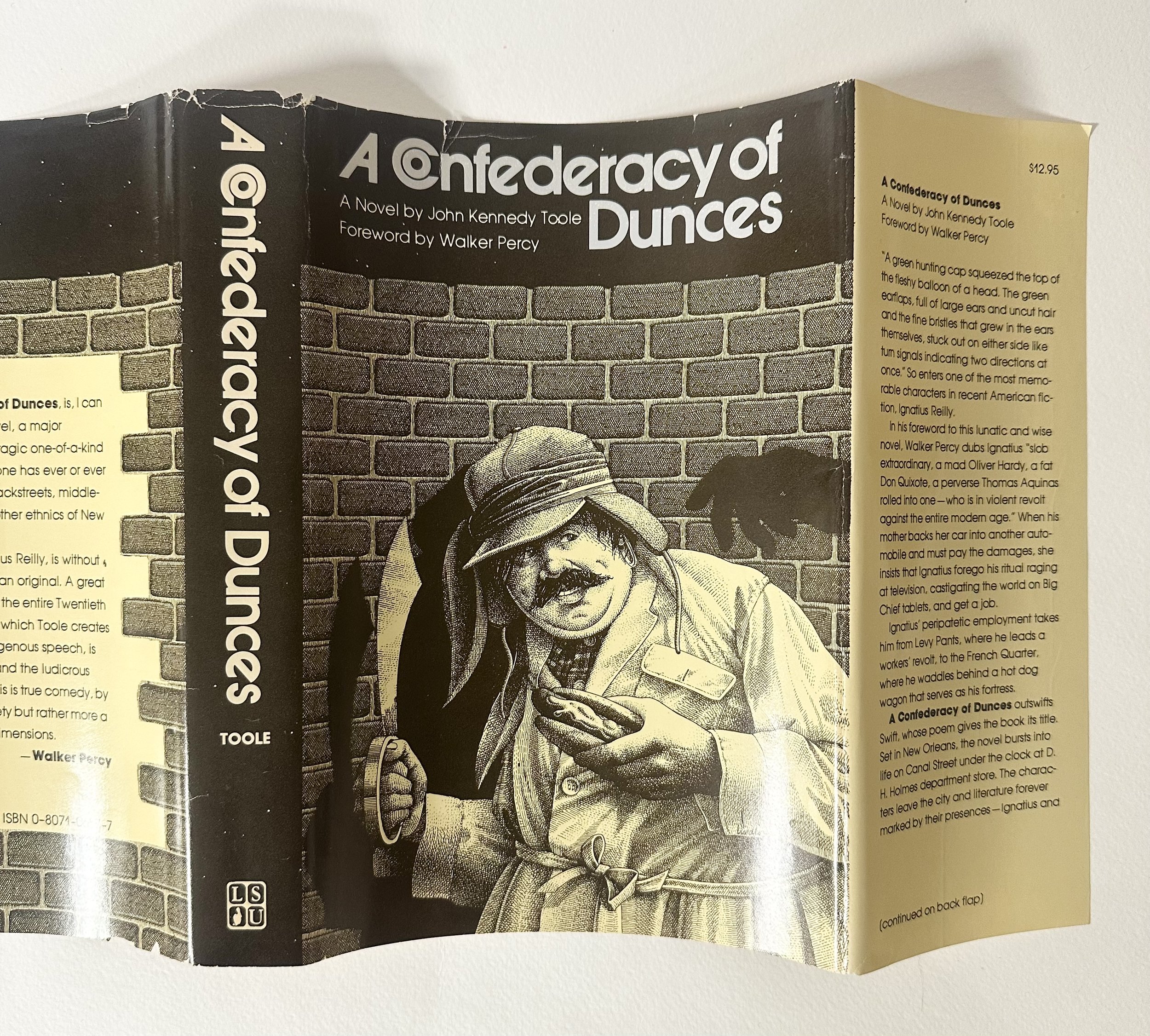 Image 9 of 13
Image 9 of 13

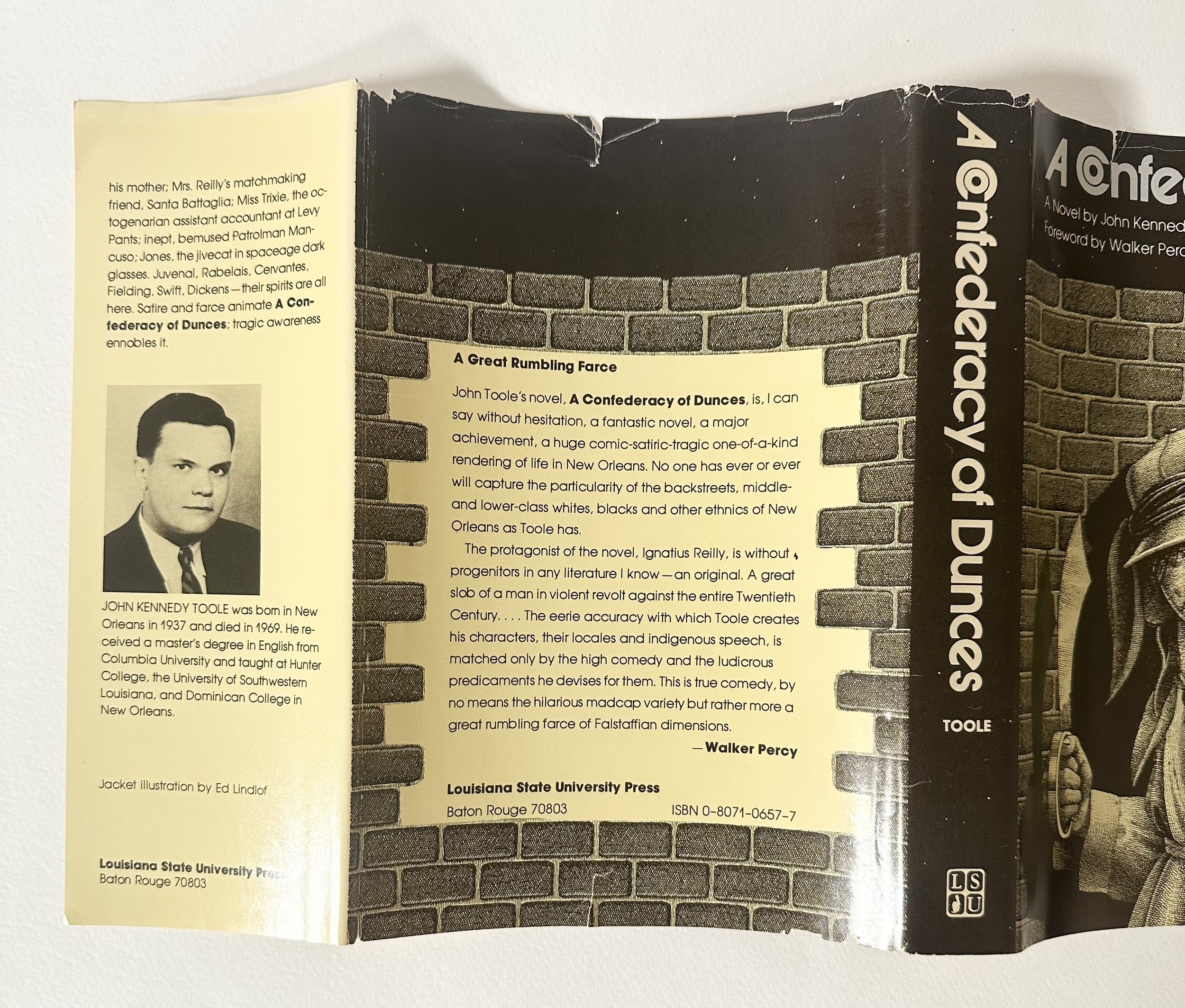 Image 10 of 13
Image 10 of 13

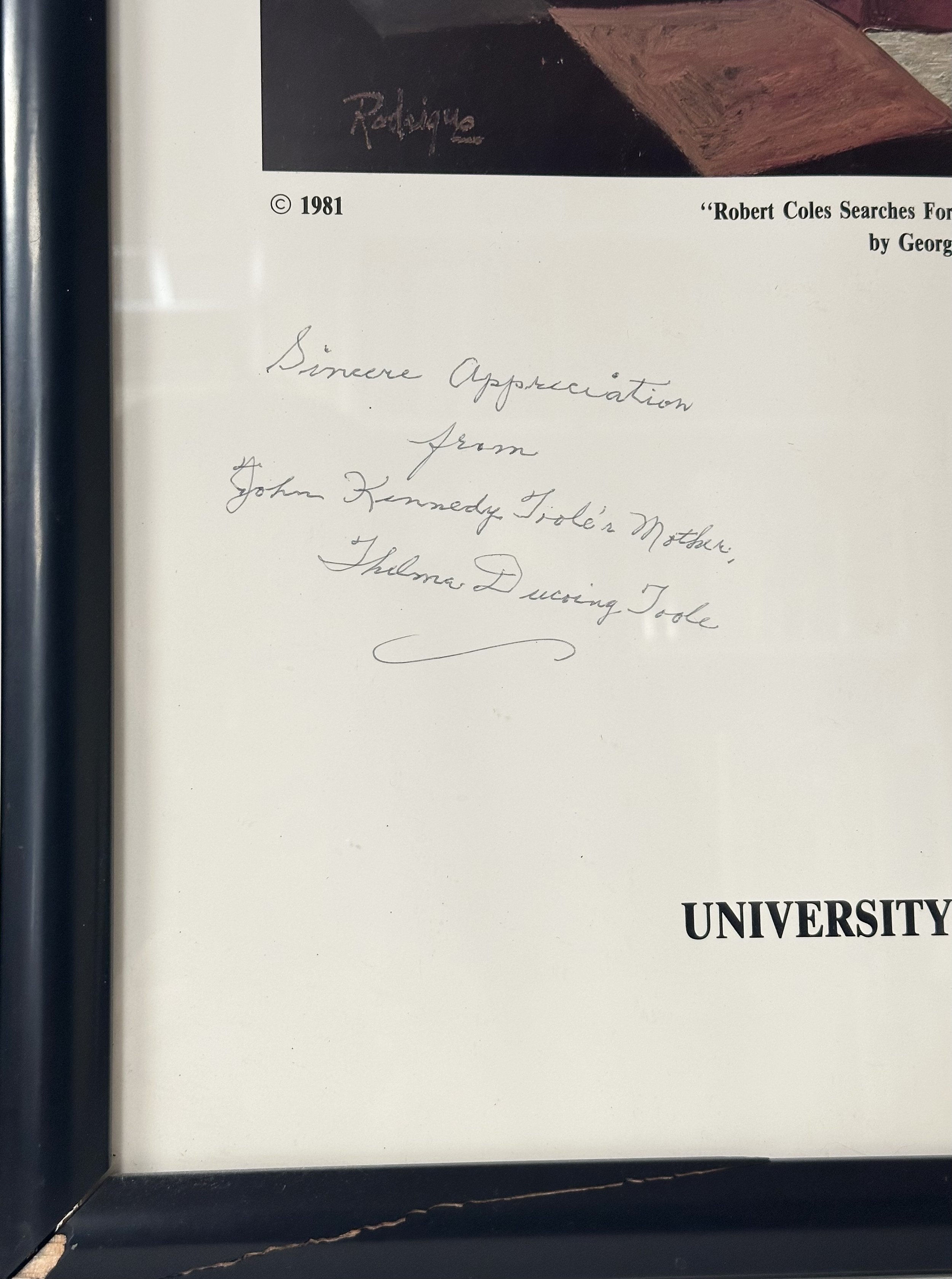 Image 11 of 13
Image 11 of 13

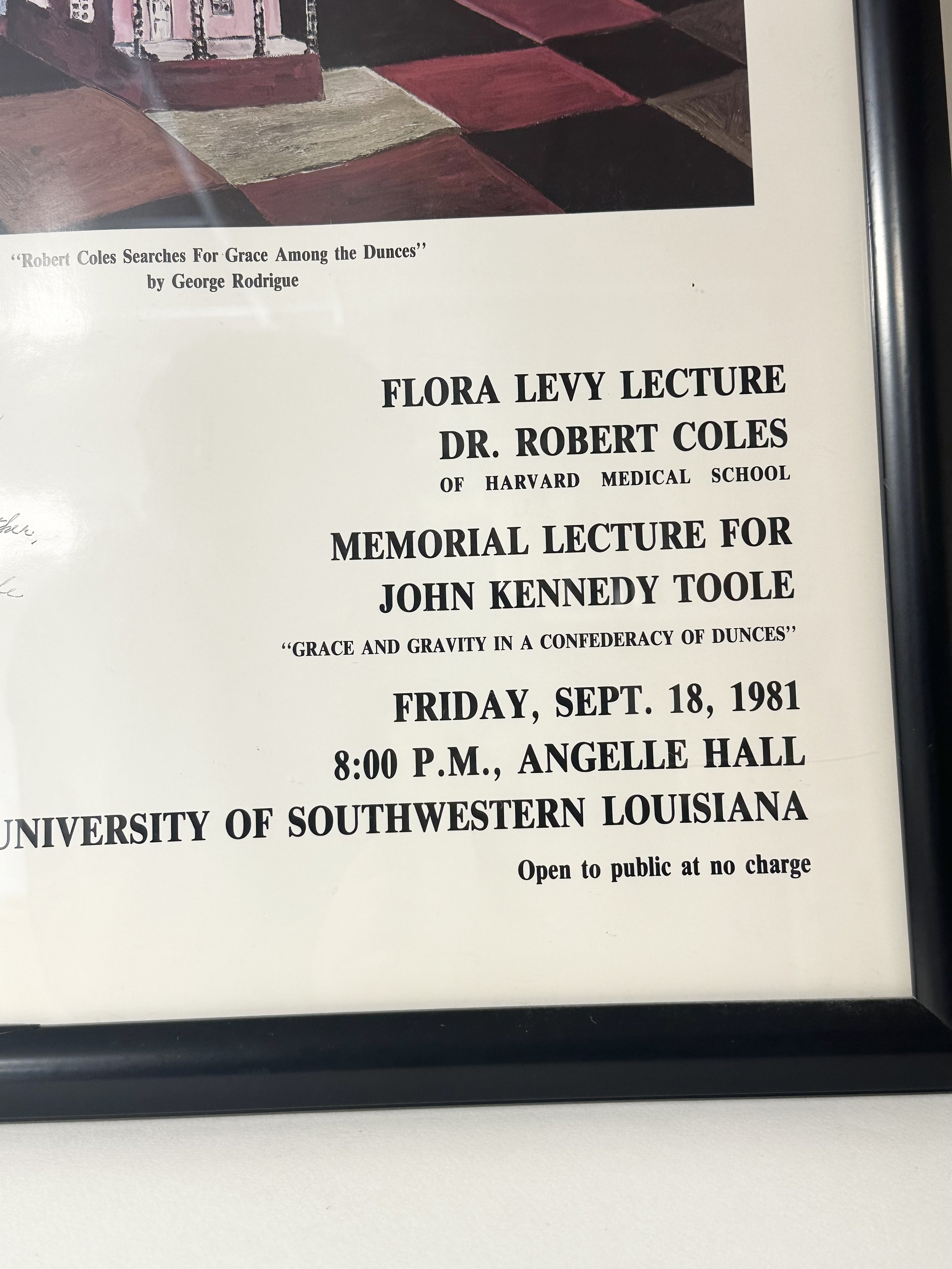 Image 12 of 13
Image 12 of 13

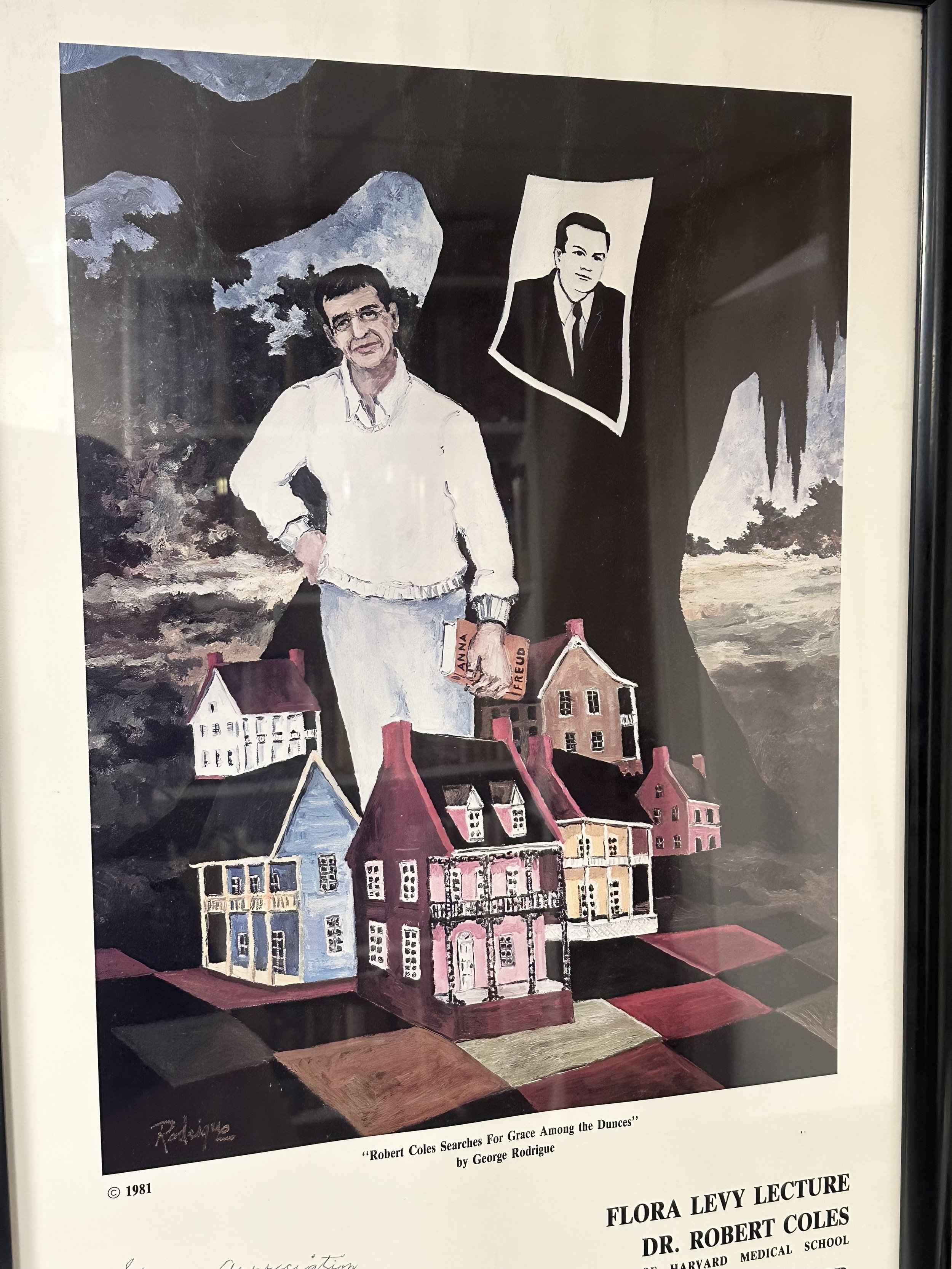 Image 13 of 13
Image 13 of 13














TOOLE, John Kennedy. A Confederacy of Dunces (with poster signed by his mother)
TOOLE, John Kennedy. A Confederacy of Dunces, together with RODRIGUE, George, “Robert Coles Searches for Grace Among the Dunces”, framed poster with inscription from the author’s mother. Baton Rouge and London: Louisiana State Press. 1980. 8vo. First edition, first printing. Publisher’s grey cloth lettered in black to the spine, in the striking dust jacket designed by Ed Lindlof giving us a first taste of Toole’s marvellous invention, Ignatius J. Reilly. The poster designed by advertising the Memorial Lecture of John Kennedy Toole on Friday Sept. 18, 1981 at the University of Southwestern Louisiana campus, measuring 80cm x 47cm in the frame, behind glass, the poster with inscription, “Sincere appreciation from John Kennedy Toole’s mother, Thelma Ducoing Toole” in ink. The book fine, the boards pristine, the binding tight and square, the contents fine throughout with a little offsetting to half-title only. Pencil inscription to green front endpaper which nicely places the book purchased in Louisiana at the time of publication. The dust jacket the first state and issue with Walker Percy’s blurb to rear panel and the faint spots to all panels as called for. Unclipped ($12.95) and complete with a small handful of tiny nicks and closed tears. Highly presentable. The poster presenting fine, the frame with two small nicks and one slight split to lower panel.
An excellent example of this comedic classic by ‘America’s greatest literary failure’, whose road to publication is just as legendary. Toole was a precocious only child brought up in New Orleans by older parents. He wrote his first novel—The Neon Bible—aged 16, but it wasn’t published until 1989. His only major work is this, A Confederacy of Dunces, written in 1963 during his teaching role while stationed in Puerto Rico. It tells of the misanthrope, Ignatius J. Reilly, whose erudite, remarkably eccentric manner is entirely lost on his New Orleans neighbours and, especially, his overbearing mother, Irene. Ignatius is in the process of writing a lengthy indictment against our century while struggling with volcanic flatulence by way of his faulty valve, and blames his undoings on Fortuna, that capricious sprite. It’s no stretch to suppose Ignatius was an exaggerated alter-ego of himself, though it is perhaps more complex. Though now remembered as one of the funniest novels ever published, its conception and road to publication is deadly serious. Toole’s own efforts in getting his novel published failed, which was certainly a factor of his suicide in 1969. Thankfully, his overbearing mother found the abandoned manuscript, a smudged carbon copy—the original now supposed lost—which gave her a new motivation in life. Thelma was a very complex character, narcissistic privately, highly social, and emotionally unwell. She envisioned her son a genius, the manuscript he left a sacred text. In the next five years, battling with her own old age ailments, she sent the manuscript to seven publishing houses, none replied with a personal note. Much like everything in her life, though, she was determined to the point of delusion. When Walker Percy took up a role at Loyola University of New Orleans, Thelma had read that Percy had received hundreds of manuscripts from his students and others in Louisiana. Her strategy was simple: pester him until he gives in. The breakthrough came months later, when she accosted him at the university. Percy had dodged her for months, and his colleague Marcus Smith remembers stalling Thelma for Percy before his parting shot: “Walker, there’s an old lady waiting up there who’s going to give you a lot of trouble. I’ve had my turn, and now it’s yours”. A few weeks later, Percy read the novel, writing to Thelma the book was “an extraordinary display of mordant humour, wild satire, and an uncanny ear for New Orleans speech”. Percy passed it on to the Louisiana State Press, whose director, Les Phillabaum compared the novel to the work of Thomas Pynchon and John Barth, whom he passed it on to. He and his associates were determined to publish the novel, despite its financial strain. In 1980, Thelma had got her wish and the novel was published in an edition of 2500 copies. It was ‘a unique and considerable achievement by Thelma, but her pursuit of that goal was not entirely out of love for her child’. Thelma revelled in her dead son’s late fame and the Pulitzer Prize for Fiction win a year later only serve to magnify this, her pride in her son seen through a different lens her own self-aggrandisement. The poster, by Louisiana artist George Rodrigue, pictures the preeminent scholar on Toole, Robert Coles, ‘in search for grave among the dunces’. A marvellous item. [Nevils & Hardy].
TOOLE, John Kennedy. A Confederacy of Dunces, together with RODRIGUE, George, “Robert Coles Searches for Grace Among the Dunces”, framed poster with inscription from the author’s mother. Baton Rouge and London: Louisiana State Press. 1980. 8vo. First edition, first printing. Publisher’s grey cloth lettered in black to the spine, in the striking dust jacket designed by Ed Lindlof giving us a first taste of Toole’s marvellous invention, Ignatius J. Reilly. The poster designed by advertising the Memorial Lecture of John Kennedy Toole on Friday Sept. 18, 1981 at the University of Southwestern Louisiana campus, measuring 80cm x 47cm in the frame, behind glass, the poster with inscription, “Sincere appreciation from John Kennedy Toole’s mother, Thelma Ducoing Toole” in ink. The book fine, the boards pristine, the binding tight and square, the contents fine throughout with a little offsetting to half-title only. Pencil inscription to green front endpaper which nicely places the book purchased in Louisiana at the time of publication. The dust jacket the first state and issue with Walker Percy’s blurb to rear panel and the faint spots to all panels as called for. Unclipped ($12.95) and complete with a small handful of tiny nicks and closed tears. Highly presentable. The poster presenting fine, the frame with two small nicks and one slight split to lower panel.
An excellent example of this comedic classic by ‘America’s greatest literary failure’, whose road to publication is just as legendary. Toole was a precocious only child brought up in New Orleans by older parents. He wrote his first novel—The Neon Bible—aged 16, but it wasn’t published until 1989. His only major work is this, A Confederacy of Dunces, written in 1963 during his teaching role while stationed in Puerto Rico. It tells of the misanthrope, Ignatius J. Reilly, whose erudite, remarkably eccentric manner is entirely lost on his New Orleans neighbours and, especially, his overbearing mother, Irene. Ignatius is in the process of writing a lengthy indictment against our century while struggling with volcanic flatulence by way of his faulty valve, and blames his undoings on Fortuna, that capricious sprite. It’s no stretch to suppose Ignatius was an exaggerated alter-ego of himself, though it is perhaps more complex. Though now remembered as one of the funniest novels ever published, its conception and road to publication is deadly serious. Toole’s own efforts in getting his novel published failed, which was certainly a factor of his suicide in 1969. Thankfully, his overbearing mother found the abandoned manuscript, a smudged carbon copy—the original now supposed lost—which gave her a new motivation in life. Thelma was a very complex character, narcissistic privately, highly social, and emotionally unwell. She envisioned her son a genius, the manuscript he left a sacred text. In the next five years, battling with her own old age ailments, she sent the manuscript to seven publishing houses, none replied with a personal note. Much like everything in her life, though, she was determined to the point of delusion. When Walker Percy took up a role at Loyola University of New Orleans, Thelma had read that Percy had received hundreds of manuscripts from his students and others in Louisiana. Her strategy was simple: pester him until he gives in. The breakthrough came months later, when she accosted him at the university. Percy had dodged her for months, and his colleague Marcus Smith remembers stalling Thelma for Percy before his parting shot: “Walker, there’s an old lady waiting up there who’s going to give you a lot of trouble. I’ve had my turn, and now it’s yours”. A few weeks later, Percy read the novel, writing to Thelma the book was “an extraordinary display of mordant humour, wild satire, and an uncanny ear for New Orleans speech”. Percy passed it on to the Louisiana State Press, whose director, Les Phillabaum compared the novel to the work of Thomas Pynchon and John Barth, whom he passed it on to. He and his associates were determined to publish the novel, despite its financial strain. In 1980, Thelma had got her wish and the novel was published in an edition of 2500 copies. It was ‘a unique and considerable achievement by Thelma, but her pursuit of that goal was not entirely out of love for her child’. Thelma revelled in her dead son’s late fame and the Pulitzer Prize for Fiction win a year later only serve to magnify this, her pride in her son seen through a different lens her own self-aggrandisement. The poster, by Louisiana artist George Rodrigue, pictures the preeminent scholar on Toole, Robert Coles, ‘in search for grave among the dunces’. A marvellous item. [Nevils & Hardy].
